First Baptist Church
Introduction
Text-to-speech Audio
Images
First Baptist Church as it appears in 2020. Note the difference in style on the back half of the building which is from the 1940s renovation of the church.
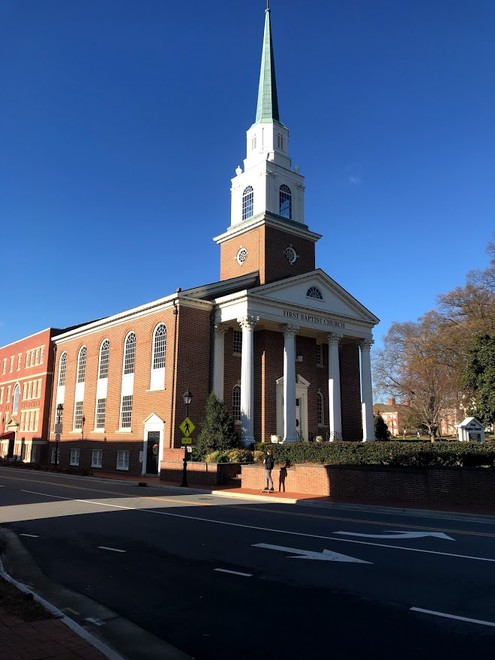
First Baptist's original building, in the same location it is today.
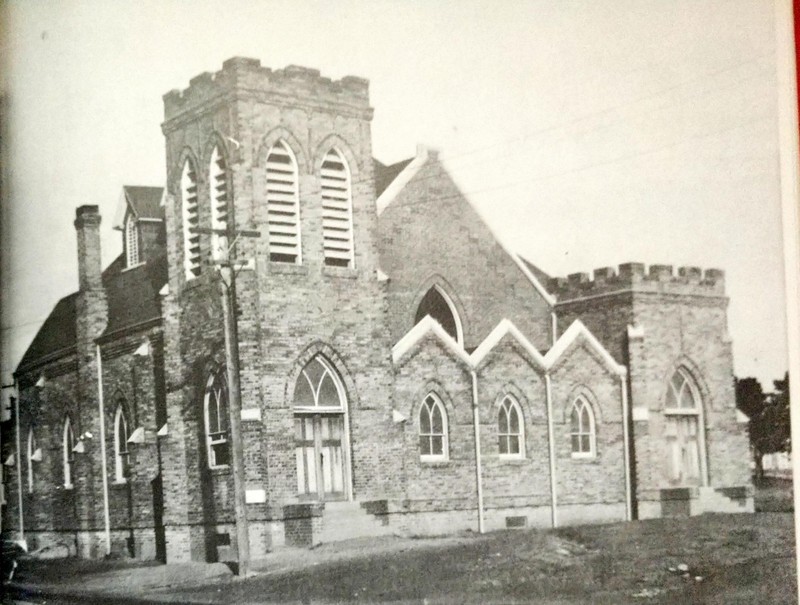
The 1940s appearance of the church after renovations to increase its sanctuary size and classroom capacity.
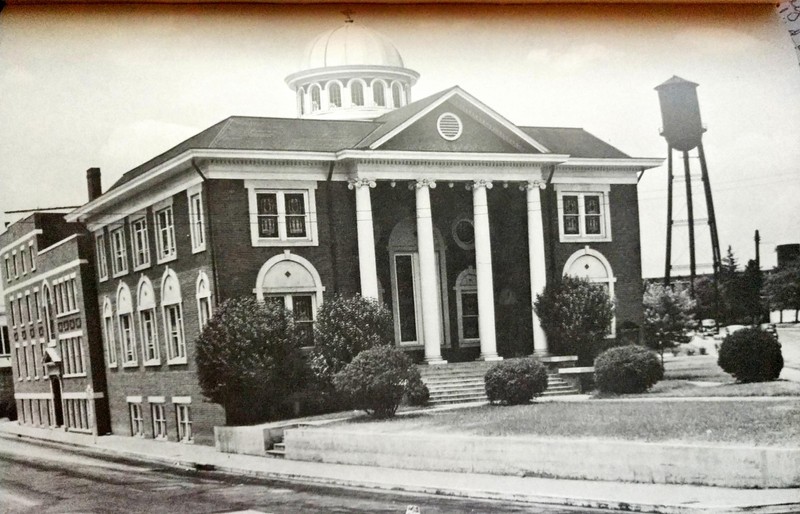
First Baptist as seen from across 1st St. in front of the Gem Theater. The structure in view was built in the 1940s.
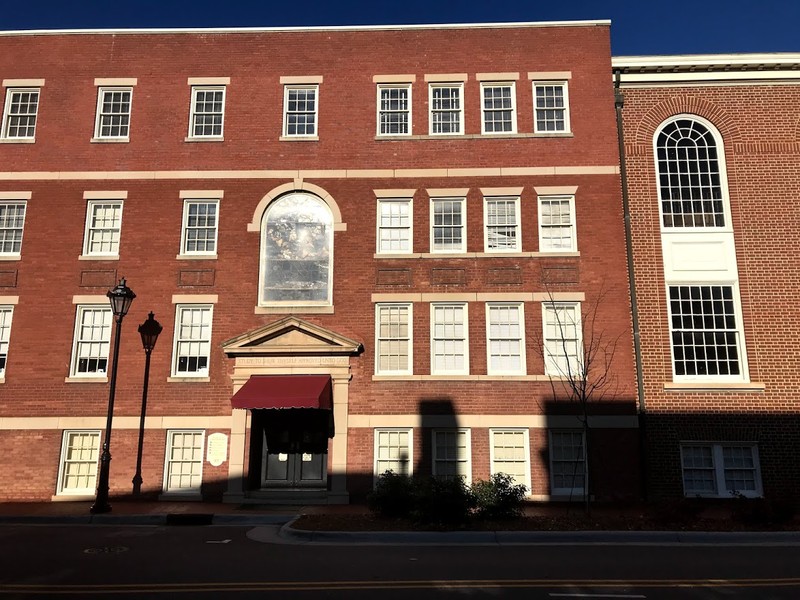
Looking towards Main Street from the Gem Theater. The difference in style is readily apparent here, with the front half of the church near the steeple having been built in 1954.
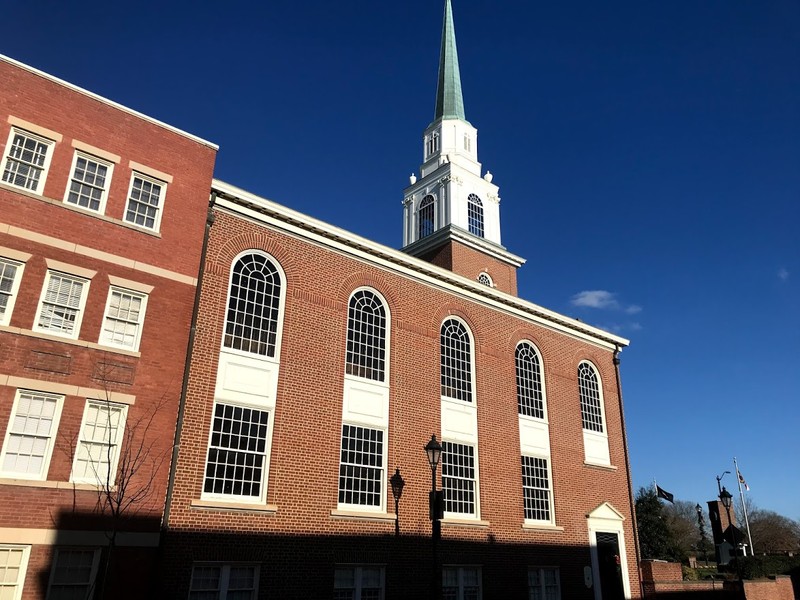
Backstory and Context
Text-to-speech Audio
The original church building was constructed in a Gothic Revival style, in an almost castle-like appearance with towers complete with small crenels and merlons. This style was quite popular among Kannapolis’ churches in the early 1900s, and a remarkable example of the style remains just off South Ridge Avenue, near Concord with the Mt. Olivet United Methodist Church, though built in 1952.
In 1940, with the population of Kannapolis growing, the mill expanding, and church membership rapidly increasing, First Baptist undertook renovations to expand the number of Sunday school rooms and seating for the main sanctuary. The result was a four-story addition to the rear of the church, which stretched parallel with 1st St., across from what was to become the rebuilt Gem Theater.[1] Additionally, the sanctuary was remodeled into a much larger structure, with a domed steeple, resembling the domed tops of the North Carolina Research Campus just down Main Street. In 1954, the sanctuary was again renovated and enlarged to its current appearance, with a massive steeple towering over the intersection of 1st St. and Main St.[2]
First Baptist’s unique position, right in front of the massive mill complex, within the village downtown, and across from many of the mill houses, gave it ample opportunity to engrain itself in the community, an important aspect of evangelical Christianity. Such notions of community are evident in the histories of First Baptist Church, as the church had numerous ties to churches of other denominations as well as community organizations like the Boy Scouts or community bands.[3] Churches were a vital part of mill towns for their tendency to act as a community adhesive, but also to instill discipline within their congregations. In many mill villages, churches were often owned by the mill owners, but this was not the case in Kannapolis or with First Baptist.[4]
Today, the church remains in its 1954 appearance, with the 1940s 4 story structure still lining First St. down to West Avenue and the 1954 sanctuary still facing Main St. A small park, dedicated to veterans, is in front of the sanctuary, marking where a road once was that took workers and visitors to the Town Park, a large park and lake located where the David Murdock Core Laboratory building rests today. Over the years, First Baptist Church has hosted numerous community events in the park, similar to its revival services at the Town Park with baptisms in the lake. While no lake exists today near the church for such purposes, First Baptist continues to be an active participant in the community, just as it was a century ago.[5]
Sources
[1] Bill Workman, First Baptist Church: Our First 75 Years, (Kannapolis, 1983), 58.
[2]Norman Brisson, and Jane Mace, First Baptist Church: Our Past 25 Years, (Kannapolis, 2008), 10.
[3] Workman, First Baptist Church, 26.
[4] Christopher B. Daly, Jacquelyn Dowd Hall, Mary Murphy Lu Ann Jones, and James Korstad, Like a Family: The Making of a Southern Cotton Mill World, (Chapel Hill: University of North Carolina Press, 1987),176.
[5] “Local.” FBC Kannapolis. Accessed December 8, 2020. https://www.firstbaptistkannapolis.com/local.html.
First Baptist Church: Our First 75 Years
First Baptist Church: Our First 75 Years
Hannah Holt
Hannah Holt
